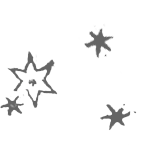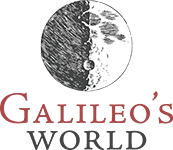Women and Science
Women and Science
Exhibit items on the subject of women and science.
Exhibit Items
|
An Astronomical Catechism Whitwell, Catherine (1818) This dialogue between a mother and her daughter offers a delightful introduction to the night sky. It contains 23 engraved plates drawn by Whitwell herself, including four hand-colored folding plates. |
 |
|
|
Urania's Mirror with A Familiar Treatise on Astronomy Aspin, Jehoshaphat (1825) Constellation figures remained popular in education, as in these constellation cards which make learning the constellations easy. The set includes 32 cards, each focused upon one or a few constellations. |
||
| 0 |
The Hevelius Sextant |
|
| 0 |
Evenings at the Microscope Gosse, Philip Henry (1884) |
|
| 1 |
Works of Hippocrates Hippocrates, (1588) Greek edition of Hippocrates by a friend of Galileo: Mercuriale collected the various Greek texts of the Hippocratic corpus and published them here in Greek with parallel Latin translations. |
 |
| 3 |
The Climactic Year Hevelius, Johann (1685) In astrology, a “climactic year” marks a turning point, a moment of greatest risk. The preface explains that 1679 was Hevelius’ climactic year, for in that year his observatory burned. Fire destroyed manuscripts, books and instruments, including his sextant. He was 67 years old. |
|
| 3 |
Medical Remedies Hildegard of Bingen, (1533) Free medical care from the medieval Abbess who composed music, rebuked rulers, saw visions and wrote many books: In the Middle Ages, convents were places where anyone might seek free health care. |
 |
| 4 |
Garden of Health , (1491) Medieval remedies and natural knowledge: An explosion of 16th-century herbals dramatically extended the “materia medica” tradition deriving from ancient writers, assimilating a vast increase in the number of known plants. |
|
| 4 |
Flowers, or, On the Cultivation of Flower Gardens, 1664 Ferrari, Giovanni Battista (1664) This work, first published in the year of Galileo’s trial (1633), contains the first use of microscopic illustration in a botanical work. Ferrari described many exotic plants, including limes, lemons and pomegranates, and citron, which he prescribed as medicinal plants against scurvy. |
|
| 5 |
The Natural History of Plants, 1542 Fuchs, Leonhart (1542) Fuchs extracted the best knowledge available from Galen, Dioscorides and Pliny. Fuchs gave each plant a German name as well as the traditional Latin. He described nearly 100 northern European plants unknown to previous physicians. |
|
| 5 |
Memoir and Correspondence Herschel, Caroline (1876) The 19th century saw an unprecedented expansion of known objects in the universe. William and Caroline Herschel conducted a comprehensive search of northern skies with telescopes powerful enough to resolve many nebulae into star clusters. |
 |
| 7 |
Wonder Chambers of Nature Vincent, Levinus (1706-1715) Levinus Vincent, a wealthy Dutch merchant with ties to the East Indies, created a spectacular natural history museum in Haarlem. Visiting dignitaries admired his museum, including Peter the Great and King Charles III of Spain. |
|
| 8 |
The Botanic Garden Darwin, Erasmus (1790) Erasmus Darwin, the grandfather of Charles Darwin, propounded an evolutionary theory in this widely popular didactic poem on plants. In Part 2, “Loves of the Plants,” he inserted a footnote about manzanilla (also known as chamomile). |
|
| 8 |
The Caterpillar Garden Merian, Maria Sybilla (1717) Merian, an artist and naturalist, studied the relationships between flowers and insects; she also bred her own insects for this purpose. She was particularly interested in metamorphosis. |
|
| 9 |
The Generous Muse of the Heavens Cunitz, Maria (1650) Prior to Newton, fewer than half a dozen astronomers accepted Kepler’s three laws. Galileo was typical in ignoring everything Kepler did. Yet this beautiful book is an exception: it clearly demonstrated that Kepler’s laws were more accurate than anything that had come before. |
|
| 11 |
General History of China, vol. 1 du Halde, J.B. (1741) Du Halde lived in China for nearly 30 years. This work recounts the story of Candida Xu, who collaborated with the Jesuit astronomers as had her grandfather, Xu Guangki. For a foldout map of China, du Halde drew upon the Kangxi atlases of 1717 and 1721. |
 |
| 12 |
General History of China, vol. 3 du Halde, J.B. (1741) Du Halde lived in China for nearly 30 years. This work recounts the story of Candida Xu, who collaborated with the Jesuit astronomers as had her grandfather, Xu Guangki. For a foldout map of China, du Halde drew upon the Kangxi atlases of 1717 and 1721. |
 |
| 12 |
Aristotle’s Masterpiece , (1788) Family medical handbook: Works entitled “Aristotle’s Masterpiece” were family health guides, written in the vernacular, offering practical remedies and advice for life cycle care, sexual relations, prenatal care, birthing and midwifery, hygiene and health. |
 |
| 13 |
General History of China, vol. 4 du Halde, J.B. (1741) Du Halde lived in China for nearly 30 years. This work recounts the story of Candida Xu, who collaborated with the Jesuit astronomers as had her grandfather, Xu Guangki. For a foldout map of China, du Halde drew upon the Kangxi atlases of 1717 and 1721. |
 |
| 15 |
Conversations on the Plurality of Worlds Fontenelle, (1728) In this dramatic and entertaining dialogue, Fontenelle explained Cartesian philosophy and cosmology and argued for the existence of life on other worlds. He justified a popular writing style by encouraging women and men to engage in pleasant evening conversation together on scientific topics. |
|
| 16 |
Army Sanitary Administration and its Reform under the late Lord Herbert Nightingale, Florence (1862) Organization of nursing as a profession: Florence Nightingale championed social reform and the organization of nursing as a profession. |
|
| 17 |
Newtonianism for Women Algarotti, Francesco (1737) Algarotti’s popular introduction to Newtonian science went through many editions and aided in the dissemination of Newtonian ideas on the European continent. It was dedicated to Fontenelle. Like Fontenelle’s Plurality of Worlds, it was written as an entertaining dialogue. |





